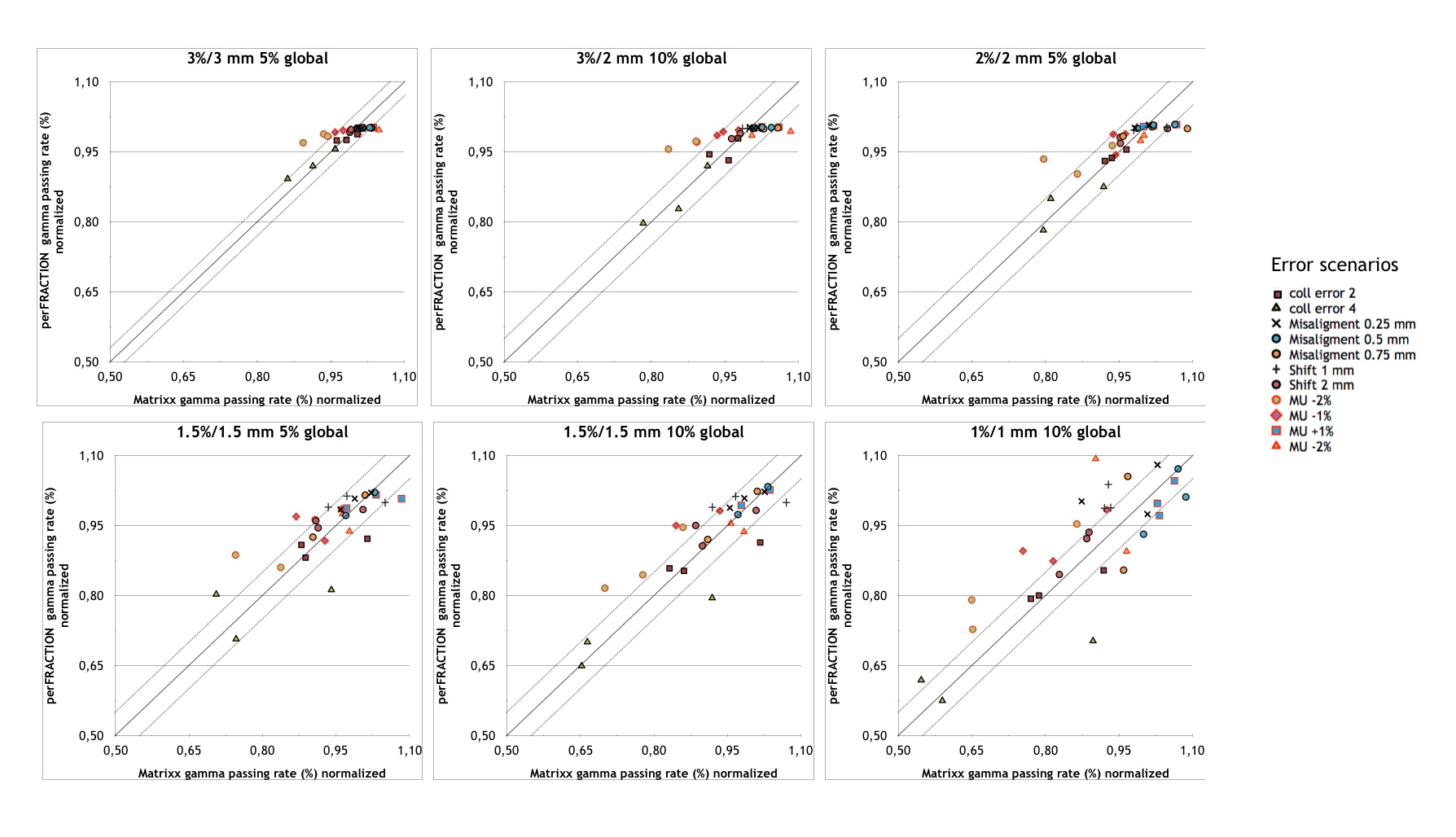Enhancing patient safety with log file analysis : perFRACTION® optimal gamma criteria for VMAT QA
PD-0893
Abstract
Enhancing patient safety with log file analysis : perFRACTION® optimal gamma criteria for VMAT QA
Authors: francesca itta1, Grazia Maria Mistretta1, Paola Ceroni1, Victoria Gutierrez1, Federica Campanaro1, Luciano Morini1, Francesco Marino1, Silue Koubegnery2, Elisa D'Angelo3, Gabriele Guidi1
1University Hospital of Modena, Medical Physics Unit, Modena, Italy; 2International Centre for Theoretical Physics & University of Trieste, Master in Medical Physics Student, Trieste, Italy; 3University Hospital of Modena, Radiotherapy Unit– Oncology and Hematology department, Modena, Italy
Show Affiliations
Hide Affiliations
Purpose or Objective
Introducing an automatic log file based analysis tool such as perFRACTION® into clinical practice could be a time-saving strategy for on-line patient specific VMAT QA enhancing patient safety and risk management. The perFRACTION® log-file based only (LFO) strategy has been investigated as an alternative method to phantom based (Matrixx®) patient specific VMAT QA. The purpose was to evaluate the optimal gamma criterion for the perFRACTION® LFO strategy to catch clinically relevant error scenarios.
Material and Methods
By manipulating three gold standard (error free) VMAT plans optimized with the Raystation® TPS, a total of 33 error plans were generated by using a home made Python scripting procedure. Different magnitudes of errors were simulated in terms of multi-leaf collimator (MLC) position (MLC shift: [+1mm,+2mm], MLC misalignment: [+0.25mm,+0.5mm,+0.75mm]), collimator angle (angle rotation: [+2°,+4°]) and monitor unit (MU) delivery (MU :[±1%, ±2%]). All the error free and the corresponding error plans were delivered with an Elekta Versa HD and QA was performed simultaneously with both the perFRACTION ® (LFO) and Matrix® (phantom-based) systems for different gamma criteria (3%/3 mm/Global Th5%, 3%/2 mm/Global Th10%, 2%/2 mm/Global Th5%, 1.5%/1.5 mm/Global Th10%, 1.5%/1.5 mm/Global Th5%, 1%/1 mm/Global Th10%). The resulting gamma passing rates were analysed.
Results
The impact of gamma criteria on the error detection capability for both systems investigated is shown in the scatter plots in figure 1. Each scatter plot focus on a different gamma criterion. The x position of each data point corresponds to the gamma passing rate of an error scenario obtained with Matrixx and its y position to its perFRACTION value. All data points are normalized with respect their own error free plan gamma passing rate value. As data points below the diagonal line indicate a lower gamma passing rate value for perFRACTION (better error detection capability for the system), it results that perFRACTION LFO has a better performance in detecting geometric errors as follows: in 52% of cases for 3%/3 mm/Global Th5%, in 57% of cases for 3%/2 mm/Global Th10%, in 61% of cases for 2%/2 mm/Global Th5%, in 42 % of cases for 1.5%/1.5 mm/Global Th10%, in 42% of cases for 1.5%/1.5 mm/Global Th5% and in 42% of cases for 1%/1 mm/Global Th10%. Of notice, Matrixx is always better than perFRACTION LFO in detecting MU -1% -2% dose error scenarios. Considering a 5% detection level perFRACTION LFO needs a gamma criterion equal or lower than 1.5%/1.5 mm (global) in order to detect geometric errors.

Fig.1 Passing rates for different error scenarios and different gamma criteria.
Conclusion
Our error scenario analysis clearly shows that the perFRACTION LFO strategy has the potential to catch clinically relevant geometric errors if an adeguate gamma criterion is used. Combining LFO with transmission dosimetry methods (eg. EPID based) could increase the ability of the system in detecting clinically relevant dose delivery errors.